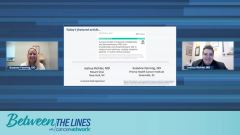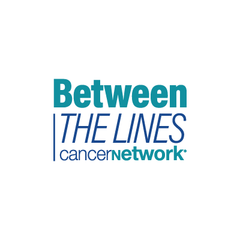
Key Points From the Routine Clinical Practice Study of IRD vs Rd
Experts summarize key points from routine clinical practice on use of ixazomib, lenalidomide, and dexamethasone (IRD) in patients with relapsed/refractory multiple myeloma.
Episodes in this series

Joshua Richter, MD: This is the 10,000-foot view of the data from this trial and this paper as it stands and compared with the TOURMALINE. One big question is, how does this translate to clinical practice? Dr Fanning, do you use IRd [ixazomib, lenalidomide, dexamethasone]? Where and how do you use it? Any tips and tricks?
Suzanne Fanning, DO: I definitely use it. I’m a big fan of the all-oral combination. One thing we haven’t mentioned is that with the COVID-19 pandemic, it’s nice to have an all-oral regimen. There have been times, in different regions of the country, when the coronavirus has waxed and waned, where patients don’t want to leave their home. If they can avoid it, they want to minimize coming into an office setting, which might increase their risk. For that reason, having the all-oral regimen is nice. I’d also add to that combination. It’s nice for patients who are busy with life, who don’t have the time to come for injections or infusions, things of that sort. It’s also a nice regimen for those patients who are dialysis dependent. Those patients often have schedules 3 times a week, so an all-oral regimen makes that easier for the patient.
Joshua Richter, MD: You bring up an extremely important point about COVID-19. Right now, at the time of filming this, we’re knee-deep in omicron, so an all-oral regimen is great. One thing I tell patients is that the timing of when to take these medicines helps—steroids in the morning with breakfast to hopefully it mitigate being awake at 3 o’clock in the morning, rearranging your sock drawer because you took dexamethasone too late. Ninlaro needs to be taken on an empty stomach. Ninlaro before lunch on an empty stomach and taking dexamethasone a couple of hours beforehand helps mitigate some of the GI toxicity of the drug. Lenalidomide at night helps because some of that asthenia maximizes while sleeping. If needed, supportive meds can be added, but it’s nice taking them in that order seems to help a lot of the symptoms.
Suzanne Fanning, DO: I agree completely. I tell patients to take it the same way. That works out well. If they’re going to have nausea, it’s more likely to come from the Ninlaro, so the antiemetic property of the steroids is great. I also remind providers that those patients do require dose adjustments. It’s much better to dose adjust and keep a patient on therapy longer than it is to hold at a higher level. Unfortunately, the patient discontinuation. There was a good amount—about 40%, of patients—who did require dose adjustment. I definitely encourage that.
Joshua Richter, MD: The trial is showing that if you stop because of an adverse event on a regimen, you do worse. Your strategy is the optimal 1: dose adjust as necessary, add supportive care as necessary. Absolutely, that’s the key to success. As you pointed out, this is not a curable malignancy, so you need to stretch every bit of response out of every regimen. You and I practice very similarly.
Transcript edited for clarity.
Newsletter
Stay up to date on recent advances in the multidisciplinary approach to cancer.













































































